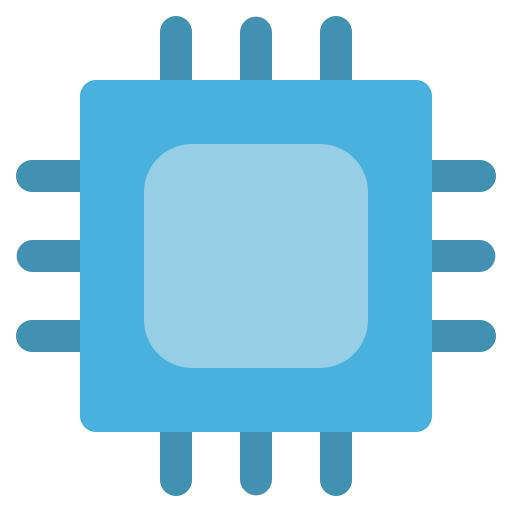

I’m beautiful and tough like a diamond…or beef jerky in a ball gown.




Just an x64 box running OpenWRT.


Same boat. Declined their router and just use their ONT. Not that the router makes a difference, but my “wan6” interface has been waiting for an IP address for about the same amount of time as yours.


Yeah. There’s other precedent for that, too.
With the original Xbox, you couldn’t play DVD’s without the infrared remote kit (even though the software and hardware was capable). The license fee for that was part of the cost of the IR receiver and remote kit.
Didn’t the original Raspberry Pi also sell codec licenses as well?


Yeah, the licensing is BS but couldn’t they just tack on like 40 cents to the price or whatever? For a $900+ machine, it wouldn’t even be a rounding error.
Open codecs are better, yeah, but artificially crippling existing media workflows is kind of a dick move, IMO.


Except driver’s licenses. Those are far too easy to get, especially for some people lol.
Yeah, I don’t know about pre-installed with Android that aren’t ad platforms masquerading as consumer hardware. I’d never use one unless it was supported by LineageOS or something. My comment was more “roll your own” in nature.
Maybe one of those HDMI “stick” PCs you can get? There’s x86 Android builds you can run or you can do like I did with my media PCs and boot into Openbox and just launch a fullscreen browser right to Jellyfin and control it from your phone. (My main setup uses Emby but should be able to do the same with JF).
I’ve actually got a portable Jellyfin server I take with me. Built on the OrangePi Zero 2W with a USB->NVMe acting as media storage (as well as the Jellyfin DB). It’s got several other services running as well as a second Wifi adapter so it can also act as a travel router.
For playback, I pretty much just use my laptop or phone but have thought about adding one of the “stick” PCs as a client for it.


Yep, that’s why I haven’t messed with Kubernetes either; way overkill for a homelab and especially so since I downsized due to soaring electricity costs here.


The only reason I gave up on Docker Swarm was that it seemed pretty dead-end as far as being useful outside the homelab. At the time, it was still competing with Kubernetes, but Kube seems to have won out. I’m not even sure Docker CE even still has Swarm. It’s been a good while since I messed with it. It might be a “pro” feature nowadays.
Edit: Docker 28.5.2 still has Swarm.
Still, it was nice and a lot easier to use than Kubernetes once you wrapped your head around swarm networking.


I had 15 of the 2013-era 5010 thin clients. Most of them have had their SSDs and RAM upgraded.
They’ve worn many hats since I’ve had them, but some of their uses and proposed uses were:
Of the 15, I think I’m only actively using 4 nowadays. One is my MPD+Snapcast server, one is running HomeAssistant, ,the third is my backup LDAP server, and one runs my email server (really). The rest I just spin up as needed for various projects; I downsized my homelab and don’t have a lot of spare capacity for dev/test VMs these days, so these work great in place of that.
do GSI roms still contain google binaries (play store, play services, etc…) or is it similar to a AOSP rom where its just a bare android image
Yes. That’s to say they can be either depending on how the ROM was built. All of the GSI ROM builders I’ve worked with usually have multiple releases of the same build with different configurations: root, no root, with Google services (often MicroG), without Google services, combinations of both, etc.
To my understanding, GSI ROMs are basically just the “userland” portion of a full ROM. Basically they use the stock/existing kernel, drivers, etc but replace the rest of the system that runs on top of it. If memory serves, they’re possible due to Project Treble. Sadly, they still require an unlocked bootloader to install, so they’re not a total fix-all.
They’re also very generic generic images (hence the “G” in the term). They’re not optimized for any specific device and can be hit-or-miss feature wise depending on the device. If you’re already reading about a specific device on XDA forums, then you’ll probably be able to see what works and what doesn’t.
TL;DR: Running a GSI ROM is like upgrading to a newer Linux distro but without upgrading the kernel.


“Does it piss you off when Google/whatever does [blank]? Yeah, me too. So I run my own versions to not have to deal with that crap. Would you like me to set you up an account on my stuff?”
A database can be used to plug into any number of applications that run on top of it as well as be easily shared by multiple people and centrally backed up. Auditing, logging, and row and table level access controls, and other measures can be easily added.
Excel files (or even MS Access files) as “databases” are often just people emailing around a file or accessing it from a shared drive. You end up with a split-brain situation at best and at worst you’re dealing with constant file corruption from multiple people thinking they can access it from a shared drive at the same time.
Then you get vendor lock in and are forced to keep MS Office professional licenses because Shawn created some stupid Access “app” 10 years ago which is “THE DATABASE” and no one understands how it works.


Not that I’d own a smart fridge, but if I did and they started shoving ads on it, it’d look like this later that day:



I think the point of 11h is to achieve that kind of range without directional antennas. Basically as a higher-bandwidth version of LoRa.


Yeah, that one took me a minute. I think “drip” or “slow drip”? I know “drip” used to be a term but was never one I associated with “screwball” or “crackpot”. Usually I’d heard “drip” to mean something closer to “dull” or “boring”.


Pretty decent unless there’s a lot of animation / video in them. Calling, texting, looking up something on the internet, bank app, auth app, etc all work great. Some of the stock Android components don’t work super great with it, though, like the quick action buttons (though, arguably, they don’t work great on any Android phone either lol).
Feels sluggish at times but that’s just the e-ink being what it is. I mostly treat it like a dumb phone that’s also an e-reader.


I’ve always joked that coding as a hobby is just digital knitting lol.